 How often are salads part of your meals?
How often are salads part of your meals?
We must admit, salads are a part of almost every meal in our home. Especially when locally-grown produce is available — we love the taste, texture and nutrition that a huge salad provides. Plus, the combinations of ingredients are endless!
Of course, high quality REAL ingredients are a HUGE part of what makes great salads, and the right dressing can take a salad to the next level…in flavor and nutrition!
Unfortunately, salad dressings can get a bad rap.
We are bombarded with information about how loading up your salad with dressing can cause it to no longer be part of a healthy lifestyle. And, many restaurants don’t help the situation by serving 3x the amount of dressing we need on our salads, fueling the perception that a lot of dressing is needed to make a salad taste good.
Because of this, the solution for some is to resort to “fat-free” or “low-fat” dressings…or worse, not to eat salads because of the perception “salads are not healthy anyways.” These are definitely the WRONG solutions!
Light and Low-Fat is not the answer!
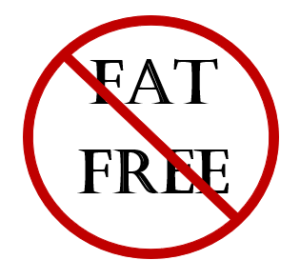 These “lightened-up” salad dressings are often loaded with more sugar, sodium or other additives to replace the fats that have been removed.
These “lightened-up” salad dressings are often loaded with more sugar, sodium or other additives to replace the fats that have been removed.
Just as important, or maybe even more important, these dressings don’t allow you to absorb all the beneficial nutrients waiting for you in your big bowl of veggies!
Don’t Fear the Fat!
Studies show that a healthy fat on your salad increases the bioavailability, or how much of a nutrient you can absorb from your food.
This means that healthy fats significantly increase how well your body absorbs vitamins and powerful antioxidants found in the rainbow of ingredients included in your salad. And these antioxidants are key to reducing the risk of the dreaded chronic diseases that we all want to avoid.
 When it comes to the best fats for your salad, monounsaturated fats are the best. Foods high in monounsaturated fats include olive oil, canola oil, avocados, nuts (especially almonds and pecans) and seeds (such as pumpkin and sesame seeds).
When it comes to the best fats for your salad, monounsaturated fats are the best. Foods high in monounsaturated fats include olive oil, canola oil, avocados, nuts (especially almonds and pecans) and seeds (such as pumpkin and sesame seeds).
While those “light” dressings may be lower in calories, they typically don’t provide the taste and nutrition your body deserves.
What IS the best answer?
By far, the best solution is to MAKE YOUR OWN! Dressings you make at home are more flavorful, healthier and less expensive — plus, they are super-easy to prepare!
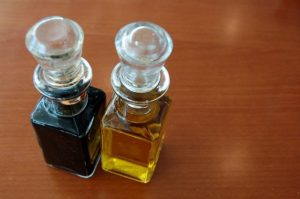 Here is a quick and easy dressing you can literally prepare in seconds:
Here is a quick and easy dressing you can literally prepare in seconds:
2 Tbsp of olive oil + 1 Tbsp of balsamic (or red wine) vinegar
That’s it! Just blend, shake or whisk. This is our go-to dressing when we are in a hurry and need to get dinner on the table. It’s simple, easy and tastes great!
Want a creamier version? Just add 1 Tbsp of dijon mustard, so it’s just 3 simple ingredients:
 2 Tbsp of olive oil + 1 Tbsp of balsamic vinegar + 1 Tbsp of dijon mustard
2 Tbsp of olive oil + 1 Tbsp of balsamic vinegar + 1 Tbsp of dijon mustard
To make a great homemade dressing, use this guide:
oil + acid + salt + pepper.
Acids include various types of vinegars and citrus juices, such as lemon, lime or orange. We like using the 2 to 1 ratio (2 Tablespoons of oil to 1 Tablespoon of acid), but feel free to adjust to your taste.
Once you have this basic dressing down, get creative and use some of these ideas to mix and match, or create your own — the possibilities are endless!
Here are some, easy-to-prepare, great-tasting dressings:
Moroccan Salad with Cilantro Orange Dressing
Grape, Fig and Walnut Salad with Simple Vinaigrette
Kale Clementine and Feta Salad with Honey Lime Dressing
Hearts of Romaine Salad with Creamy Feta Dressing
Salad with Addictive Spicy Pecans and Berries
What about bottled salad dressings?
Have you ever stopped to look at the ingredients in a typical salad dressing? It may surprise you! We know some of us have personal and strong relationships with our favorite dressings, but reading the ingredients can be eye-opening.
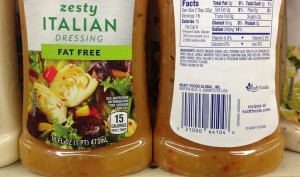 Most bottled dressings have ingredients that are difficult to pronounce and that our grandmothers wouldn’t even recognize as food. Many of these ingredients are added to extend shelf-life or add texture, color or flavor. For example, Kraft Zesty Italian is promoted to be “healthy,” but check out the ingredients:
Most bottled dressings have ingredients that are difficult to pronounce and that our grandmothers wouldn’t even recognize as food. Many of these ingredients are added to extend shelf-life or add texture, color or flavor. For example, Kraft Zesty Italian is promoted to be “healthy,” but check out the ingredients:
INGREDIENTS: Water, Vinegar, Sugar, Salt, Contains Less than 2% of Soybean Oil, Dried Garlic, Garlic, Modified Food Starch, Xanthan Gum, Dried Red Bell Peppers, Dried Onions, Spice, Yellow 5, Yellow 6, Potassium Sorbate and Calcium Disodium EDTA as preservatives.
This is why it is SO important to read the ingredient label — and this one isn’t near as bad as some of the other bottled dressings!
We know the salad dressing aisle at the store may make your head spin. And, while making homemade dressings can free you from this decision-making stress, sometimes convenience will have you resorting to bottled dressing, so here are a few tips:
- Avoid dressings that are overly processed, with a long list of unrecognizable ingredients. Bolthouse Farms and Annie’s brands are good choices.
- Choose full-fat dressings that get their fat from healthy fats such as olive oil.
- Fruity vinaigrettes may sound healthier, but make sure to check the ingredients list to avoid a ton of added sugars. See our coaching tip for more about added sugars.
Have you ever noticed when you go to a good restaurant, they typically make their own dressing? There is a reason for that…the bottled dressings just won’t do. Homemade dressings taste so much better…and are much better for you!
Give it a try…
Once you start making simple dressings at home, you can begin to walk right past the salad dressing aisle in the store – and you will get the benefit of great taste, better nutrient absorption, and more money in your bank account!
 LEARN MORE ABOUT THE NAPKIN!
LEARN MORE ABOUT THE NAPKIN!
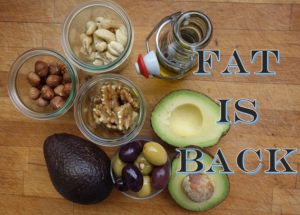
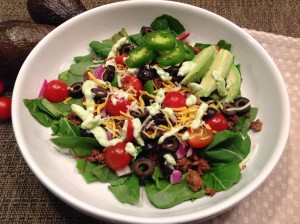
Leave A Comment